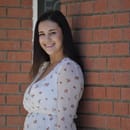Contrary to popular belief, becoming a teacher is much more complicated than it may seem. One of the steps to get into a credential program is to take the CSET and CBEST for the state of California. These tests are meant to make sure that we are sufficiently prepared to become teachers and that we have enough knowledge to teach our future.
Personally, I am pursuing a Multiple Subject Teaching Credential which means my CSET has three subtests. Although it is all apart of the same test, technically, you are able to take it in different sections to make it less overwhelming. Each subtest has its own way that I recommend studying the content.
Subtest 1 (Science/Math)
Subtest 1 is the one that people seem to feel the most uncomfortable with. For the Math portion of the CSET, your best bet is to take practice tests and/or diagnostic tests to figure out what you know and what you don’t. This way, you aren’t constantly reviewing the information that you already have mastered. For the pieces you don’t know, you should watch videos online that target specific points you need for the CSET. I recommend starting with Youtube, there are an extensive amount of playlists that people have put together over the years. For Science, you will do best if you review old powerpoints from those science class lectures and even talk to your previous professors because most are willing to help you! If they are experienced, they have had students come to them for years with the same questions and worries about CSET preparation so they may help. Again, it is important to find which aspect of science is your weakest and start there.

Subtest 2 (History/English)
History and English are what I found to be the most difficult to study for. The History section is both World History and California History. I don’t find it possible to learn the entire world’s history within a few weeks of studying. The 3-4 history classes you took in college will help you, but only if you paid attention. I found that I relied a lot on my prior knowledge from high school and even middle school history class. Since the test is meant for teachers, the ideas and concepts aren’t usually too detailed as it is more so about the broad concept of it all. Go back to the basics. Learn about each continent, and their major countries, and see how much you already know because it will probably shock you. English is similar in this way too. You need to know the way our language works, this includes the spelling, vocabulary, reading, and application. Most of it you know. The difficult part is that you need to apply it to how kids learn English, what problems they typically have, and know ways to help them learn from these mistakes. Remember, the test is for you to become a teacher, so being able to help your students learn this material is the most important part. With this subtest, it is important to not overthink it as your instinct is probably the most reliable if you are totally unsure.
Subtest 3 (Physical Education/Human Development/Visual & Performing Arts)
For Subtest 3, it is important to remember all of those human development and art classes that you thought you were just trying to get through for the degree. Although those classes seem like they wouldn’t matter entirely to your career, you will likely not pass the test without them. The problem is that it might have been a few semesters since you’ve taken these classes. Take time to think it all through. I would say that most of the Physical Education and Human Development aspects you learned throughout most of your education classes in some way or another. Find ways to apply that knowledge to what is new information and it will become less overwhelming. One benefit of being an Education major is that our coursework has such strong through lines that really prepare us for these tests. For the art section, the best way to prepare is to practice over and over. The performing arts is similar to physical education, you just need to picture it in your head and choose the best answer. The visual art portion will need practice and skills because you will be asked to analyze artwork which is difficult unless you’ve taken an art appreciation class and then you might be perfectly ready as-is.

I also recommend the CliffsNotes CSET Multiple Subjects book which has excruciating detail on the types of questions you will be asked and the ways they typically try to trick you. It also covers a large amount of material which is great because some of it you didn’t learn in any class, professors can’t get to everything. It is your responsibility to feel comfortable with the subject matter though. This book also contains 2 full practice tests that allows you to get the pace and general idea of the test before you arrive on the morning. Personally, this was what I needed because on my first testing day I felt comfortable with the testing format.
Most importantly, do not worry if you don’t pass right away. The earlier you start taking them the more time you will have but, either way, they will get done and you’ll be feeling great about all of your hard work!



